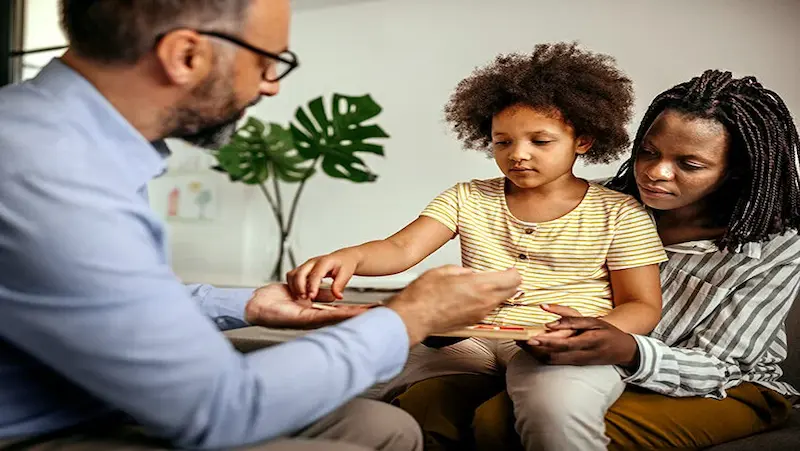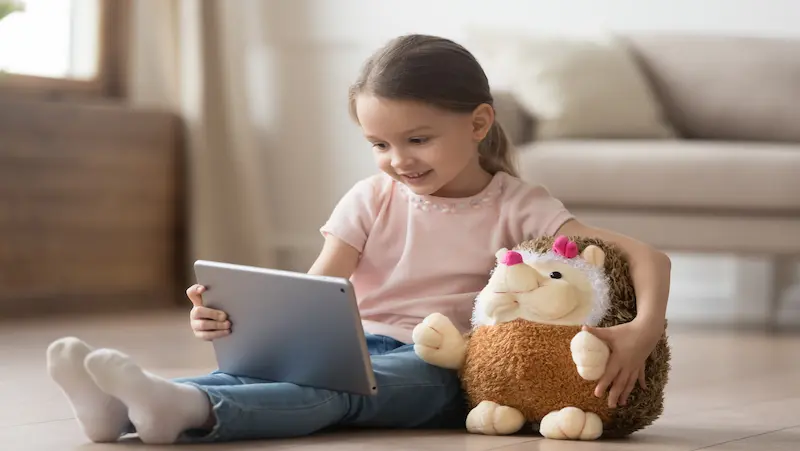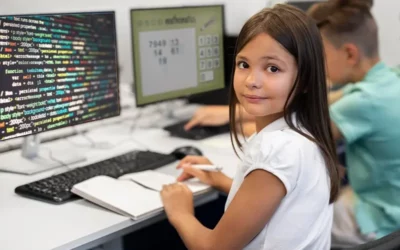As parents, one of the most significant responsibilities we hold is ensuring the education of our children. Education plays a pivotal role in shaping their lives and preparing them for a successful future. However, it’s essential to understand that education goes beyond academic excellence; it encompasses the overall development of a child’s mind, body, and soul. This comprehensive approach is known as holistic education, and it is the key to unlocking the full potential of young minds.
Table of contents
- Introduction
- Early Childhood Development
- Educational Philosophies
- Creating a Positive Learning Environment
- Holistic Learning Methods
- Nurturing Cognitive Development
- Emotional and Social Growth
- The Role of Technology in Education
- Parental Involvement in Education
- Addressing Learning Challenges
- Conclusion
- Frequently Asked Questions
Introduction
Education is the foundation on which the future of society rests. By providing children with a quality education, we equip them with the necessary skills and knowledge to navigate life successfully. Education empowers children to become critical thinkers, problem solvers, and compassionate individuals, ready to tackle the challenges of the ever-evolving world.
Holistic education goes beyond rote memorization and standardized testing. It focuses on nurturing a child’s intellectual, emotional, social, and physical growth. A holistic approach recognizes that each child is unique, with diverse abilities and interests. It aims to develop the child as a whole person, not just an academic achiever.
Early Childhood Development
Early childhood is a critical phase of development, laying the foundation for a child’s future learning and behavior. Research shows that the brain develops rapidly during these formative years, making it an opportune time to introduce enriching experiences.
Fostering Curiosity and Creativity
Nurturing a child’s natural curiosity and creativity is vital in the early years. By providing them with a stimulating environment and open-ended learning opportunities, we encourage exploration and a love for learning.
Building Emotional Intelligence from the Start
Emotional intelligence is crucial for a child’s well-being and success in life. Early childhood is an ideal time to start teaching emotional regulation, empathy, and self-awareness, setting the stage for healthy emotional growth.

Educational Philosophies
Traditional vs. Progressive Approaches
Traditional education often emphasizes structured curriculum and teacher-led instruction. On the other hand, progressive approaches focus on child-centered learning, promoting independent thinking and self-discovery.
Montessori Education: Nurturing Independence and Exploration
The Montessori method emphasizes hands-on learning and self-directed exploration. Children are encouraged to work at their own pace, fostering independence and a sense of responsibility for their education.
Waldorf Education: Embracing Imagination and Play
Waldorf education places a strong emphasis on creativity, imagination, and play. It recognizes the significance of art, music, and movement in a child’s overall development.
Creating a Positive Learning Environment
Designing Engaging and Stimulating Classrooms
The physical environment plays a crucial role in a child’s learning experience. Classroom design should be inviting and organized, with age-appropriate learning materials that encourage exploration.
The Role of Teachers in Shaping Learning Experiences
Teachers play a pivotal role in a child’s educational journey. They should be facilitators, guiding students towards self-discovery and fostering a love for learning.
Promoting Inclusivity and Diversity
A truly holistic education embraces diversity and promotes inclusivity. Schools should celebrate the uniqueness of each child and provide an environment that respects various cultural backgrounds and abilities.
Holistic Learning Methods
Education has evolved beyond traditional classroom instruction. Holistic learning methods recognize the need to engage students on multiple levels, promoting a deeper understanding of concepts and fostering a love for learning. Let’s explore the top five holistic learning methods that have proven to be highly effective in nurturing young minds:
1. Project-Based Learning for Real-World Understanding
Project-Based Learning (PBL) is an immersive approach that encourages students to explore real-world problems and challenges. Instead of rote memorization, students work on meaningful projects that require critical thinking, problem-solving, and collaboration. PBL empowers students to take ownership of their learning, promoting autonomy and self-direction. Through hands-on experiences and interdisciplinary projects, students gain a deeper understanding of subjects and their relevance in the real world. Additionally, PBL fosters creativity and innovation, preparing students to be lifelong learners and adaptable problem solvers.
2. Experiential Learning: Hands-On Encounters
Experiential learning involves learning through direct experiences and active engagement. It allows students to immerse themselves in the subject matter, making learning more tangible and memorable. By participating in experiments, field trips, simulations, and hands-on activities, students connect theory with practice, enhancing their understanding and retention of information. Experiential learning also encourages curiosity and exploration, as students can interact with the world around them, sparking a deeper interest in learning.
3. Integrating Arts and Sports into Education
Integrating arts and sports into education recognizes the significance of creative expression and physical development in a well-rounded education. The arts, including visual arts, music, drama, and dance, provide avenues for students to express themselves and develop their imagination. Arts education enhances critical thinking, communication, and emotional intelligence. Likewise, sports and physical activities promote physical fitness, teamwork, discipline, and resilience. By incorporating arts and sports into the curriculum, students benefit from a holistic education that nurtures both their minds and bodies.
4. Collaborative Learning: Learning from Peers
Collaborative learning emphasizes group work and peer interactions as a means of enhancing learning. In this method, students work together in teams to solve problems, discuss ideas, and share knowledge. Collaborative learning fosters communication skills, cooperation, and empathy. It also allows students to learn from their peers’ diverse perspectives and experiences, promoting a deeper understanding of subject matter. Group projects and discussions enable students to develop social skills and build a supportive learning community, contributing to their overall personal and academic growth.
5. Mindfulness and Meditation Practices
Mindfulness and meditation practices have gained popularity in education for their ability to promote emotional regulation, reduce stress, and enhance focus. Mindfulness techniques involve being present in the moment and paying attention without judgment. By integrating mindfulness practices into the school day, students can develop self-awareness, improve their concentration, and manage their emotions effectively. These practices create a positive and calm learning environment, where students can better absorb and retain information.
Incorporating these holistic learning methods into educational practices not only enriches the learning experience but also prepares students for success in the dynamic world they will inherit. By nurturing their cognitive, emotional, and social development, these approaches empower students to become well-rounded individuals with the skills and mindset needed to navigate challenges and make a positive impact on society.

Nurturing Cognitive Development
Developing Critical Thinking Skills
Critical thinking is the ability to analyze and evaluate information objectively. By encouraging children to think critically, we enable them to make informed decisions and solve problems effectively.
Enhancing Problem-Solving Abilities
Problem-solving skills are essential for overcoming challenges in life. Encouraging children to approach problems with a growth mindset fosters resilience and adaptability.
Encouraging a Growth Mindset
A growth mindset emphasizes the belief that abilities and intelligence can be developed with effort and perseverance. Nurturing this mindset helps children embrace challenges and view failures as opportunities for growth.
Emotional and Social Growth
Building Healthy Relationships and Social Skills
Developing healthy relationships and strong social skills is fundamental to a child’s well-being. Social interactions in school enable children to learn cooperation, communication, and conflict resolution.
Emotional Regulation and Resilience
Teaching children how to manage their emotions and cope with stress fosters resilience. It equips them to handle the ups and downs of life with grace and composure.
Empathy and Compassion
Empathy and compassion are essential traits for creating a kind and understanding society. By teaching children to empathize with others’ feelings and experiences, we build a more compassionate world.
The Role of Technology in Education
Technology has revolutionized the field of education, offering a plethora of opportunities to enhance learning experiences. While integrating technology into education can be highly beneficial, it is essential to strike a balance to ensure its effective and responsible use. Here are the top three aspects of the role of technology in education:
1. Harnessing Technology for Educational Advancements
Technology has the power to transform education by providing innovative tools and resources that can enhance the teaching and learning process. Here are some ways in which technology contributes to educational advancements:
a. Digital Learning Platforms: Online learning platforms offer a wide range of educational resources, including interactive lessons, videos, and quizzes, catering to diverse learning styles. These platforms enable students to access educational content anytime and anywhere, promoting self-paced learning and personalized instruction.
b. Educational Apps: Educational apps cover various subjects and skills, making learning engaging and fun for students. These apps often incorporate gamification elements, encouraging healthy competition and motivation to learn.

c. Virtual Reality (VR) and Augmented Reality (AR): VR and AR technologies provide immersive experiences that allow students to explore and interact with subjects in 3D environments. These technologies make abstract concepts more tangible and offer unique opportunities for experiential learning.
d. Online Collaborative Tools: Technology enables students to collaborate on projects and assignments virtually, fostering teamwork and communication skills. Online collaborative tools facilitate seamless group discussions and file-sharing, breaking down geographical barriers.
2. Balancing Screen Time and Real-World Interactions
While technology offers numerous advantages, it is crucial to balance screen time with real-world interactions. Over-reliance on screens can have negative consequences, such as decreased face-to-face communication skills and increased digital distractions. To strike a healthy balance:
a. Active Learning: Encourage students to use technology for active learning rather than passive consumption. Engage in discussions, problem-solving activities, and interactive exercises that involve critical thinking and analysis.
b. Outdoor Activities: Promote outdoor activities and physical exercises to ensure students have time away from screens. Nature-based activities can improve mental health, creativity, and overall well-being.
c. Social Interaction: Emphasize the importance of face-to-face communication and social interactions. Encourage group activities, classroom discussions, and collaborative projects that involve direct human interaction.
d. Digital Citizenship: Teach students about responsible technology use, including online safety, digital privacy, and ethical behavior in the digital world.
3. Personalized Learning and Differentiation
Technology allows educators to personalize learning experiences and cater to individual student needs effectively. Personalized learning involves tailoring instruction based on students’ learning preferences, abilities, and interests:
a. Adaptive Learning Software: Adaptive learning platforms use data and algorithms to adjust content and difficulty levels based on individual student performance. This ensures that students receive targeted support and challenges, maximizing their learning potential.
b. Individualized Learning Paths: Technology enables educators to design individualized learning paths for students with varying learning speeds and styles. This approach helps students progress at their own pace and ensures that no one is left behind.
c. Data-Driven Instruction: Analyzing data from technology-based assessments and activities can provide valuable insights into student progress and learning gaps. Teachers can use this data to tailor their instruction and offer timely interventions.
Parental Involvement in Education
Strengthening the Parent-Teacher Partnership
Parents and teachers play complementary roles in a child’s education. Effective communication and collaboration between parents and teachers create a supportive learning environment.
Supporting Learning at Home
Learning doesn’t stop in the classroom. Parents can extend their child’s education by fostering a home environment that encourages curiosity, reading, and exploration.
Nurturing a Love for Learning Beyond the Classroom
Instilling a love for learning beyond formal education is a gift that will last a lifetime. Encourage children to explore their interests, visit museums, read books, and engage in hobbies that spark their curiosity.

Addressing Learning Challenges
Identifying Learning Disabilities and Special Needs
Early identification of learning disabilities and special needs is crucial to providing appropriate support and accommodations. Working closely with educators and specialists can ensure children receive the help they need.
Implementing Individualized Education Plans (IEPs)
Individualized Education Plans (IEPs) are tailored educational plans for children with special needs. These plans outline specific goals and accommodations to support the child’s learning journey.
Creating Inclusive Learning Environments
Inclusivity means creating an environment where all children, regardless of their abilities or backgrounds, feel welcome and valued. Inclusive classrooms foster empathy, understanding, and mutual respect among students.
Conclusion
Holistic education is the key to nurturing young minds for a bright future. By focusing on all aspects of a child’s development, including academic, emotional, social, and physical growth, we empower them to become well-rounded individuals.
As parents, educators, and caregivers, it is our collective responsibility to prioritize holistic education. By embracing diverse educational philosophies, creating positive learning environments, and fostering cognitive, emotional, and social growth, we can unlock the true potential of each child.
In conclusion, a holistic approach to children’s education ensures that they not only excel academically but also develop into compassionate, creative, and resilient individuals capable of making a positive impact on the world around them. Together, let’s unlock the path to holistic children’s education and pave the way for a brighter and more promising future.
To get your hands on more such educational and free resources on coding for kids, robotics courses for kids, game development, etc., do check out the Brightchamps Page now!
Frequently Asked Questions
A1. Holistic education focuses on developing the whole child, including their emotional, social, and physical well-being, in addition to academics, while traditional methods prioritize academic achievement and standardized testing.
A2. Parents play a crucial role in their child’s education by providing support, creating a nurturing environment at home, and actively engaging with teachers to foster a positive learning experience.
A3. Schools can promote a safe and inclusive learning environment by implementing anti-bullying policies, celebrating diversity, providing sensitivity training, and creating opportunities for open dialogue and empathy-building activities.


 We are an army of educators and passionate learners from BrightChamps family, committed to providing free learning resources to kids, parents & students.
We are an army of educators and passionate learners from BrightChamps family, committed to providing free learning resources to kids, parents & students.













